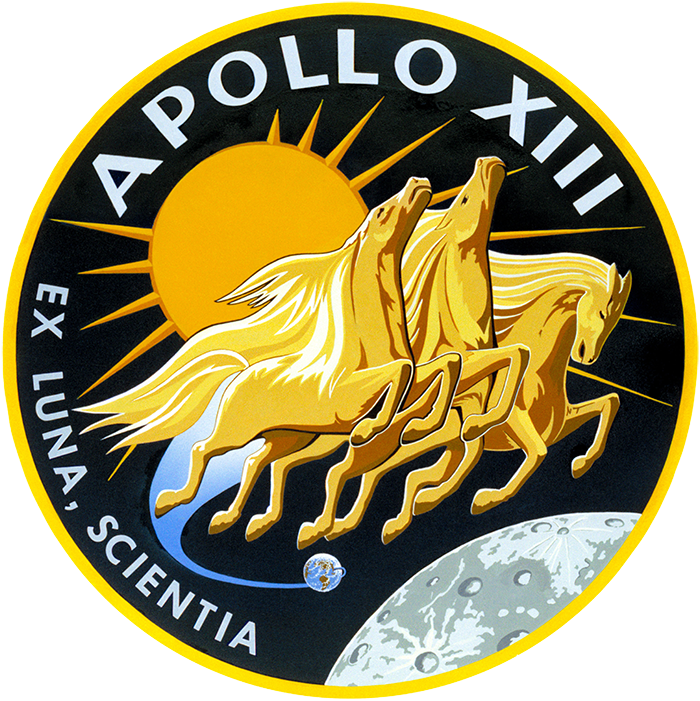Apollo 13
The Flight was going fine, then disaster struck...
Apollo 13 was the seventh manned mission in the American Apollo space program and the third intended to land on the Moon. The craft was launched on April 11, 1970, at 13:13 CST from the Kennedy Space Center, Florida, but the lunar landing was aborted after an oxygen tank exploded two days later, crippling the Service Module (SM) upon which the Command Module (CM) depended. Despite great hardship caused by limited power, loss of cabin heat, shortage of potable water, and the critical need to make makeshift repairs to the carbon dioxide removal system, the crew returned safely to Earth on April 17.


The flight passed the far side of the Moon at an altitude of 254 kilometers (137 nautical miles) above the lunar surface, and 400,171 km (248,655 mi) from Earth, a spaceflight record marking the farthest humans have ever traveled from Earth. The mission was commanded by James A. Lovell with John L. "Jack" Swigert as Command Module Pilot and Fred W. Haise as Lunar Module Pilot.
Approaching 56 hours into the mission, Apollo 13 was approximately 205,000 miles (330,000 km) from Earth en route to the Moon. Approximately six and a half minutes after the end of a live TV broadcast from the spacecraft, Haise was in the process of powering down the LM, while Lovell was stowing the TV camera, and Houston flight controllers asked Swigert to turn on the hydrogen and oxygen tank stirring fans in the Service Module, which were designed to destratify the cryogenic contents and increase the accuracy of their quantity readings. Two minutes later, the astronauts heard a "loud bang," accompanied by fluctuations in electrical power and the firing of the attitude control thrusters. The crew initially thought that a meteoroid might have struck the Lunar Module. Communications and telemetry to Earth were lost for 1.8 seconds, until the system automatically corrected by switching the high-gain S-band antenna used for translunar communications from narrow-beam to wide-beam mode.
Immediately after the bang, Lovell reported a "main B bus undervolt", a temporary loss of operating voltage on the second of the spacecraft's main electrical circuits. Oxygen tank 2 immediately read quantity zero. About three minutes later, the number 1 and number 3 fuel cells failed. Lovell reported seeing out the window that the craft was venting "a gas of some sort" into space. The number 1 oxygen tank quantity gradually reduced to zero over the next 130 minutes, entirely depleting the SM's oxygen supply.
Because the fuel cells generated the Command/Service Module's electrical power by combining hydrogen and oxygen into water, when oxygen tank 1 ran dry, the remaining fuel cell finally shut down, leaving the craft on the Command Module's limited-duration battery power and water. The crew was forced to shut down the CM completely to save this for re-entry, and to power up the LM to use as a "lifeboat." This situation had been suggested during an earlier training simulation, but had not been considered a likely scenario. Without the LM, the accident would certainly have been fatal. Eventually all three astronauts were able to make it back to earth.